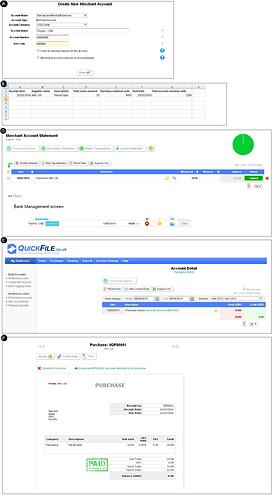Hi,
I’m not entirely sure if this is a bug or if I am doing something wrong so any advice would be greatly appreciated
The majority of our business is conducted via UK bank accounts with a currency of GBP but we also buy & sell some products in USD via a paypal account with a USD balance
In Quickbooks I have set up a Paypal Merchant Account with an account currency of USD to represent this account (nominal code 1258) and I’m currently trying to import our USD purchase history
It all seems to works fine if we add the purchases manually however the results using the import wizard are strange and as we have 000’s of transactions we cant add them all manually
e.g. We purchase some parcel tape for $10 and pay using the USD paypal account
This should be recorded as a $10 packaging expense (nominal account code 5003) and a $10 decrease of the USD paypal account (nominal code 1258)
Import wizard: In the purchase invoices import wizard I upload a csv with the following data
Gross value: 10
Purchase nominal code: 5003
Paid nominal account: 1258
The import wizard then creates the following:
-A new purchase receipt (QF00791) with a value of £10, attributable to the packaging account and marked as ‘paid in full’ by a payment (PP000799) of £10
-A new transaction in my USD paypal account of $10 money out tagged as payment for the new purchase receipt (‘This payment […] has been allocated to invoice #QF00791’)
£10 does not equal $10 and so as a result my expenses look to be higher than they really are (appear as £10, not $10)
I can provide screen shots of the PO, PP and bank statements if necessary - any advice you could give would be great!
Many thanks,
Katie
[Note: Manually it works fine
I go to the USD Paypal account screen, click ‘add a transaction’ and create a transaction with $10 money out
I then can tag this as ‘payment to a supplier’ and have the option to 'Create a new purchase record for this transaction’
I add the supplier details, select ‘packaging’ as the category and click save. This creates a new invoice with a value of $10 and attributes it to ‘packaging’ - just as I expect]

